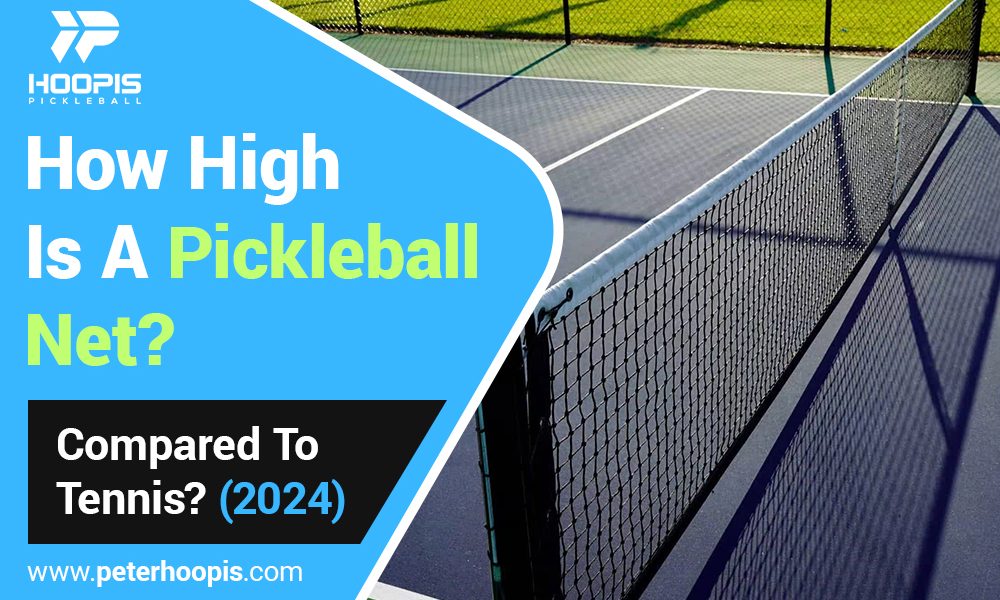The height of a pickleball net plays a crucial role in the game. It’s set at 34 inches in the center and 36 inches at the sidelines—perfectly designed for those soft, controlled dinks at the kitchen line.
In this blog post, I’ll talk about the details of pickleball net height, why these measurements are important, how they stack up against tennis nets, and everything you need to know about how high is a pickleball net?”
Let’s get started…
How High Is A Pickleball Net?
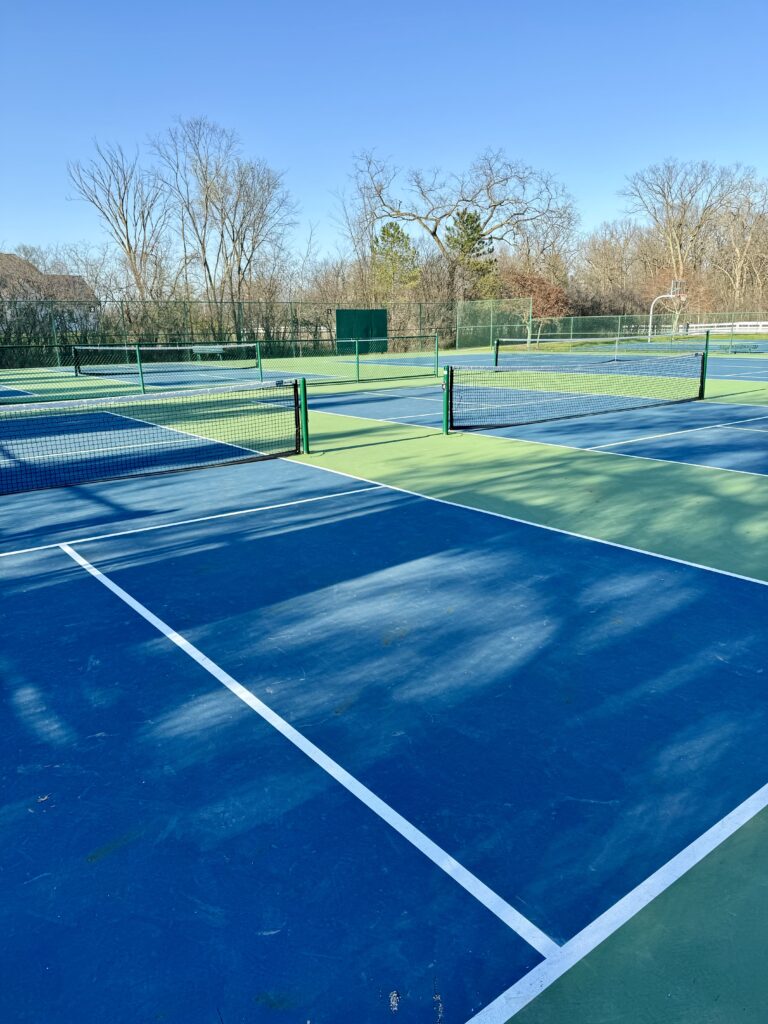
At first glance, a pickleball net might look similar to a tennis net, but it’s tailored to the unique dynamics of pickleball. A regulation pickleball net is 22 feet wide, with a height of 34 inches at the center and 36 inches at the sidelines. These dimensions may seem small, but they have a significant impact on the way the game is played.
Why the Height Matters
The two-inch drop from the sidelines to the center isn’t just about aesthetics; it’s a strategic element that influences gameplay. The lower center height makes it slightly easier to clear the net when hitting over the middle. This is especially useful for soft dinks at the kitchen line, where precision is key. Shots directed over the middle tend to stay lower to the ground, making it more difficult for your opponent to return them with power or accuracy.
On the other hand, the higher sidelines can make cross-court shots or lobs more challenging, requiring players to focus on trajectory and placement. This variation encourages strategic play, where positioning and shot selection become just as important as raw skill.
Tennis Net Height: A Comparison
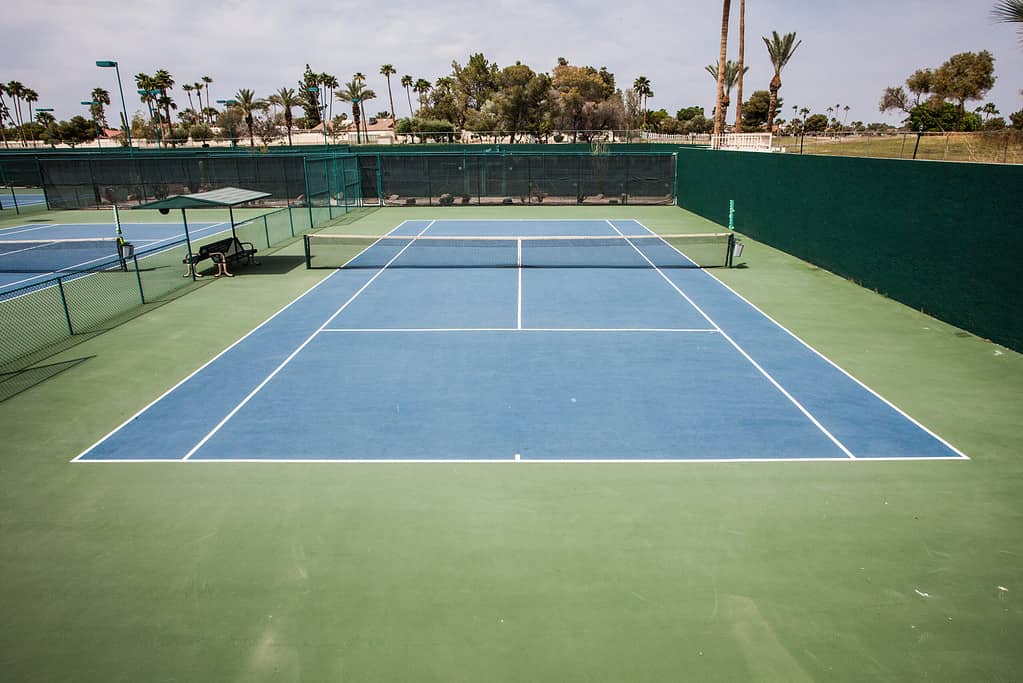
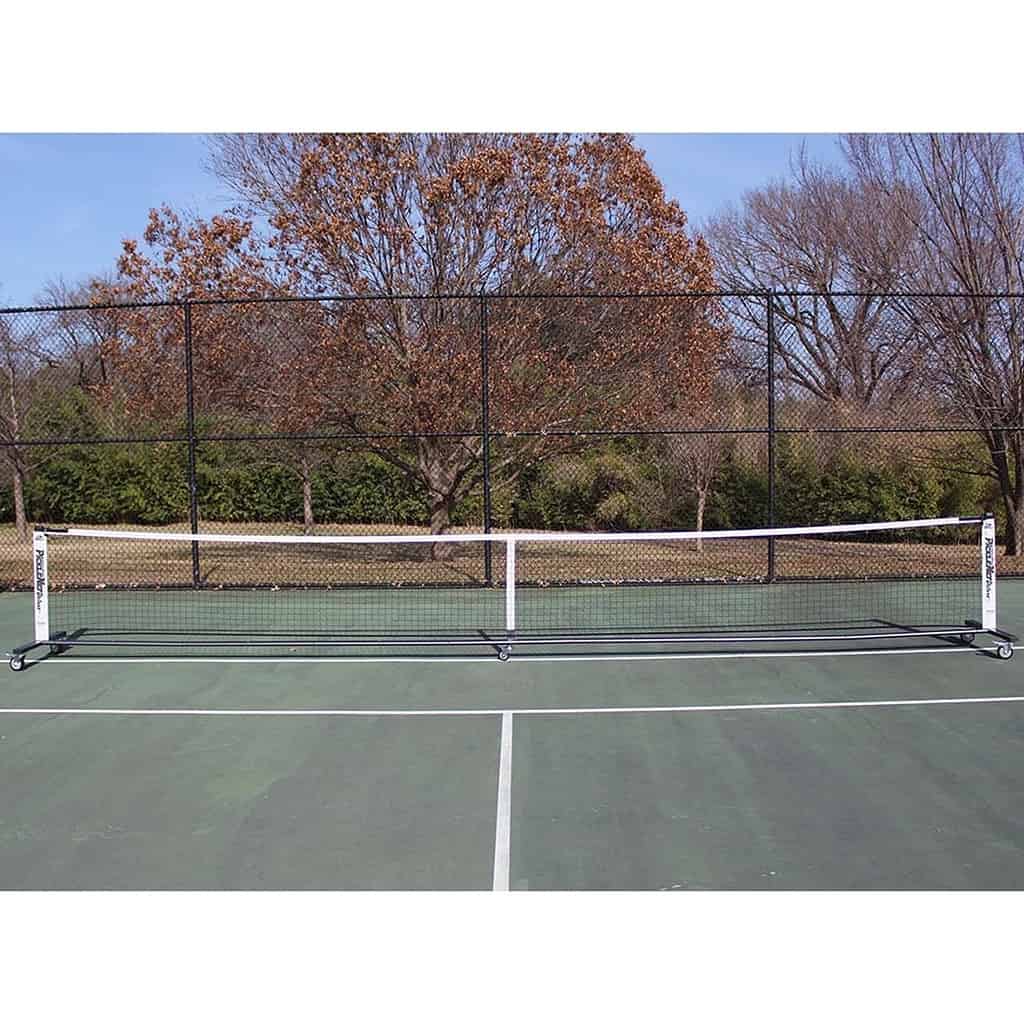
At first glance, a pickleball net and a tennis net may seem similar, but their differences reflect the distinct nature of each sport. Let’s break it down.
A tennis net stands at 36 inches high at the center, which is two inches higher than a pickleball net’s 34-inch center height. The net height at the sidelines in tennis remains the same—42 inches, much higher than pickleball’s 36-inch sideline height. These dimensions are tailored to the larger court size and the faster, more powerful gameplay of tennis.
Why the Difference in Net Heights?
The key lies in the sports’ objectives. Tennis involves longer distances, higher bounces, and more powerful serves and volleys, which necessitate a taller net to maintain balance and challenge. On the other hand, pickleball focuses on precision, control, and close-quarters strategy, which is better supported by the lower net height.
Pickleball’s smaller court (20 x 44 feet compared to tennis’s 36 x 78 feet) means players are closer to the net, and the ball doesn’t need to travel as far. A lower net accommodates this dynamic, making rallies faster-paced and more accessible for players of all skill levels.
Practical Implications for Players
If you play both pickleball and tennis, the difference in net height might seem subtle at first, but it has a significant impact on your gameplay. Here’s how transitioning between the two sports can affect your style and strategy:
1. Pickleball’s Lower Net: Encouraging Precision and Control
With a center height of 34 inches, the pickleball net is designed for finesse. This lower net rewards softer, more controlled shots like dinks, drop shots, and low-trajectory volleys. The reduced height makes it easier to clear the net, which means players can focus on strategic placement rather than sheer power.
For example:
- Dinking at the Kitchen: The lower net helps you keep your dinks low and tight, forcing your opponent into awkward returns.
- Cross-Court Shots: Lower clearance means you can aim for sharper angles, keeping your shots out of your opponent’s comfort zone.
2. Tennis’s Taller Net: Prioritizing Power and Height
In contrast, tennis nets stand 36 inches high at the center and a towering 42 inches at the sidelines. This extra height pushes players toward more aggressive strokes, including high-arching lobs and powerful groundstrokes. Clearing the net in tennis often requires more force and spin, especially for shots aimed cross-court or deep in the opponent’s court.
For example:
- Lob Strategy: In tennis, clearing the taller net with a lob requires greater precision and height, making it a challenging but rewarding tactic.
- Baseline Power Shots: The taller net encourages players to generate top spin to clear the net and keep the ball in play.
3. Adjusting Between Sports
Switching between pickleball and tennis can take some adjustment. If you’re coming from tennis:
- You may instinctively hit higher shots in pickleball, resulting in easier returns for your opponent. Focus on lowering your trajectory and prioritizing control.
If you’re transitioning from pickleball to tennis:
- Be prepared to put more power into your shots to clear the taller net. Additionally, aim for more topspin to keep your shots consistent and within bounds
Portable and Permanent Pickleball Nets
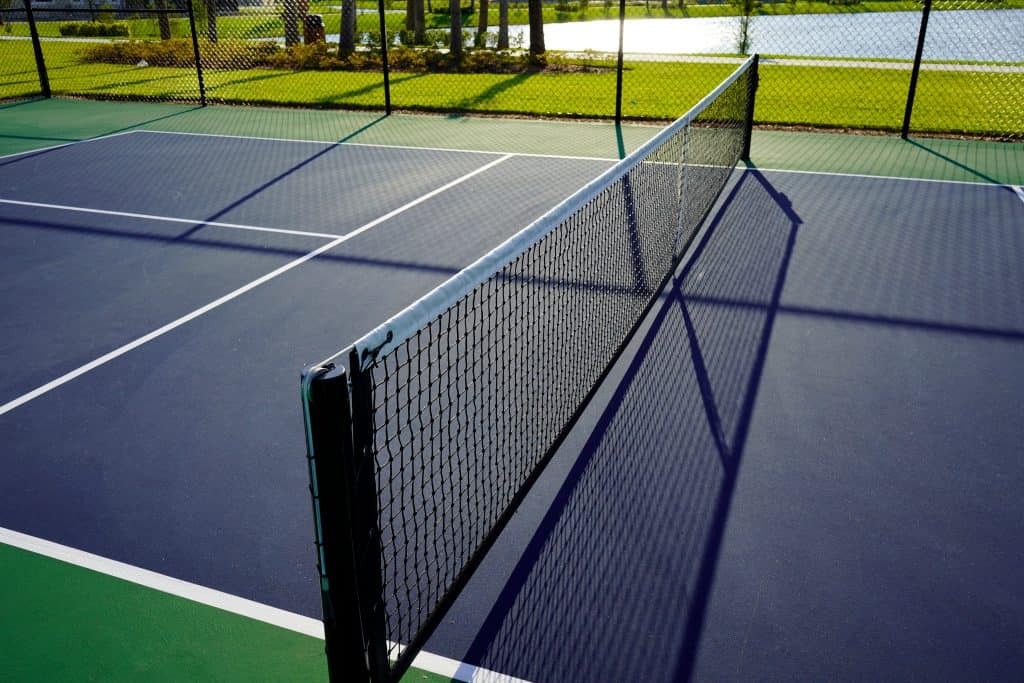
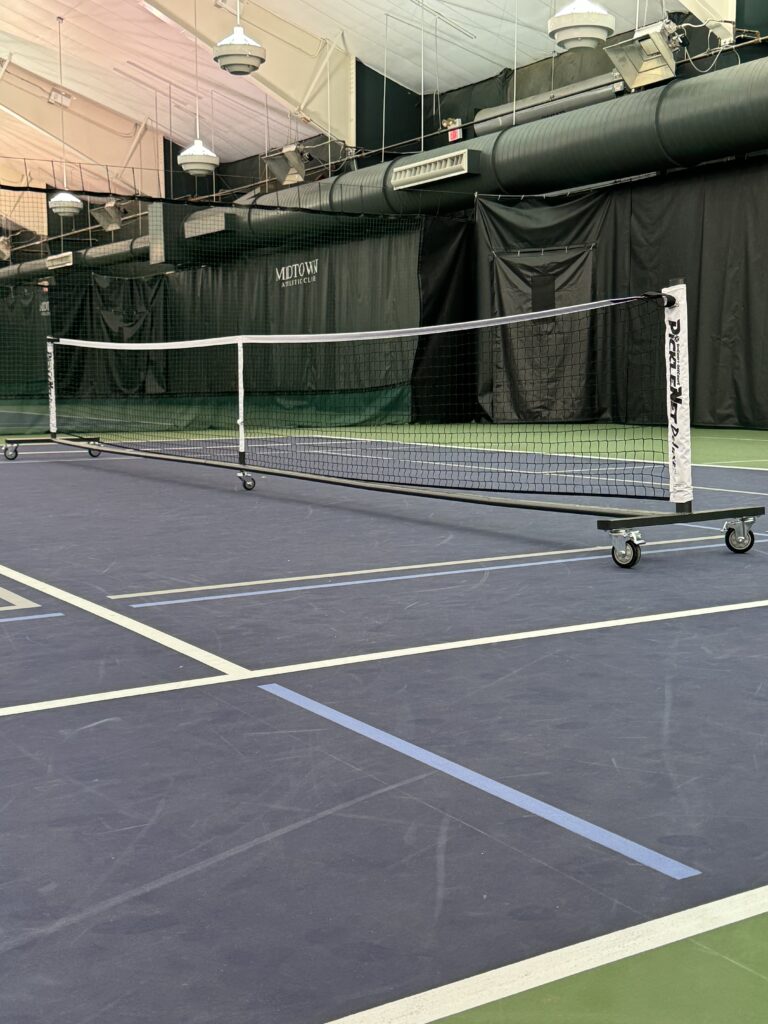
Portable Pickleball Nets: Convenience and Versatility
Portable pickleball nets are a game-changer for players who value flexibility and convenience. Whether you’re setting up a casual game in your driveway, a temporary court at a local park, or even bringing the game to a vacation spot, portable nets make it all possible.
Ease of Setup
One of the biggest perks of portable nets is how easy they are to assemble. Most models are designed with simplicity in mind, allowing you to set up or take down the net in just a few minutes. This makes them ideal for players who don’t have access to a permanent court or who like to keep their options open for where they play.
Lightweight and Easy to Transport
Portable nets are typically made from lightweight yet durable materials like aluminum or powder-coated steel. Many models include wheels or come with a carrying case, making it easy to transport them wherever you go. Whether you’re heading to a friend’s house, a community center, or even a camping trip, a portable net ensures the game is always on.
Versatility in Options
There’s a portable net for every player and budget:
- Budget-Friendly Options: Perfect for beginners or casual players who want an affordable solution for occasional games.
- Lightweight Travel Nets: Designed for ultimate portability, these are great for players constantly on the go.
- Professional-Grade Nets: For those looking for tournament-quality performance, these options combine portability with top-tier stability and durability.
Perfect for Creative Play Spaces
Portable nets shine when you need to get creative with your court setup. Whether you’re transforming a tennis court, marking off a section of a gym, or simply playing on any flat surface, a portable net adapts to your needs. They’re especially handy for multi-purpose courts where permanent installations aren’t practical.
Permanent Pickleball Nets: Built to Last
For those who have access to dedicated pickleball courts or want the most professional setup possible, permanent pickleball nets are the way to go. These nets are designed for long-term use, offering unmatched durability and stability that portable options can’t quite match.
Durability and High-Quality Materials
Permanent nets are constructed with robust materials like polyethylene netting and galvanized steel frames. These materials are designed to withstand the elements—whether it’s sun, rain, or heavy use. Unlike portable nets, which may wear down with frequent assembly and disassembly, permanent nets are built to endure for years.
Consistent Net Tension
One standout feature of permanent nets is their integrated gear systems, which ensure the net stays taut and at the correct height. Similar to permanent tennis nets, these systems make it easy to maintain proper tension, providing a reliable and consistent playing experience every time you step on the court.
Ideal for Dedicated Courts
Permanent pickleball nets are perfect for setups where the net doesn’t need to be moved or taken down. If you have a dedicated pickleball court—whether at a private home, a club, or a community center—these nets provide a professional-level experience. They stay securely in place, ensuring stability even during intense play.
Enhanced Playing Experience
With their taut netting and sturdy frames, permanent nets deliver a more polished playing experience. You won’t have to worry about sagging or shifting during a match, allowing you to focus solely on your shots and strategy.
Adapting Tennis Nets for Pickleball Play
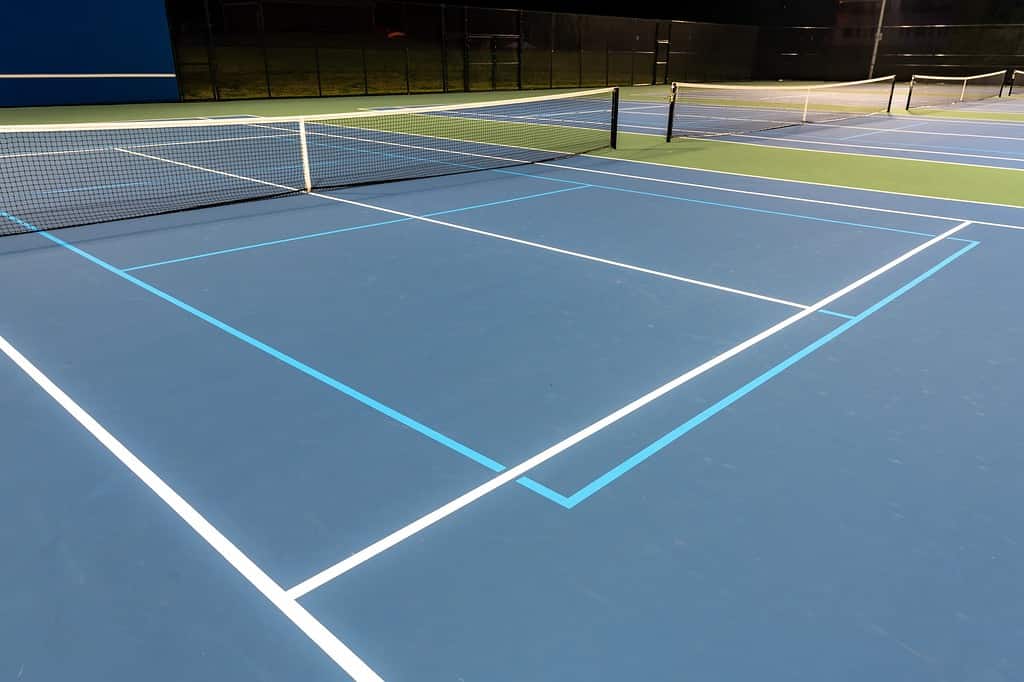
Adapting Tennis Nets for Pickleball Play
If you’re eager to play pickleball but only have access to a tennis court, don’t worry—tennis nets can be adapted for pickleball games with a few simple adjustments. While not ideal for long-term use, this setup works well for casual play or temporary games.
The Key Difference: Net Height
A standard tennis net is 36 inches high at the center and 42 inches at the sidelines, which is significantly higher than a pickleball net. Pickleball nets, on the other hand, are 34 inches high at the center and 36 inches at the sidelines. To adapt a tennis net for pickleball, you’ll need to lower the net height, particularly at the center.
How to Adjust a Tennis Net for Pickleball
- Lower the Center Strap: Most tennis nets have an adjustable center strap. Loosen it to bring the net down to 34 inches at the center.
- Use a Temporary Net Strap: If the existing strap doesn’t allow for precise adjustments, consider using a temporary strap or tie to secure the net at the correct height.
- Measure for Accuracy: Use a measuring tape to ensure the center height is exactly 34 inches and the sidelines are at 36 inches.
Limitations of Using a Tennis Net
While adapting a tennis net works in a pinch, there are some drawbacks:
- Inconsistent Net Tension: Lowering a tennis net may cause sagging, which can affect gameplay.
- Inconvenience: Adjusting the net can be time-consuming, especially if you’re sharing the court with tennis players.
- Not Regulation: This setup won’t meet official tournament standards, so it’s best for casual games.
Consider a Portable Net for Dual-Use Courts
If you frequently play pickleball on a tennis court, investing in a portable pickleball net might be a better solution. Portable nets are lightweight, easy to set up, and ensure the correct net height and dimensions for proper play.
Conclusion
Whether you’re setting up a pickleball game at a local park, playing on a dedicated court, or adapting a tennis court for your matches, understanding your net options is key to a great game.
Portable nets offer unmatched flexibility and convenience, making them ideal for players on the go. On the other hand, permanent nets provide durability and a professional playing experience for those with dedicated court space. And if a tennis court is all you have, a few adjustments can make it pickleball-ready in no time.
Ultimately, the right net depends on your needs, lifestyle, and how often you play. For casual players, a portable net might be perfect. For more dedicated setups, a permanent net could be the way to go. No matter your choice, what matters most is getting out there and enjoying the game we all love.
Now, grab your paddle, set up your net, and let the games begin!

